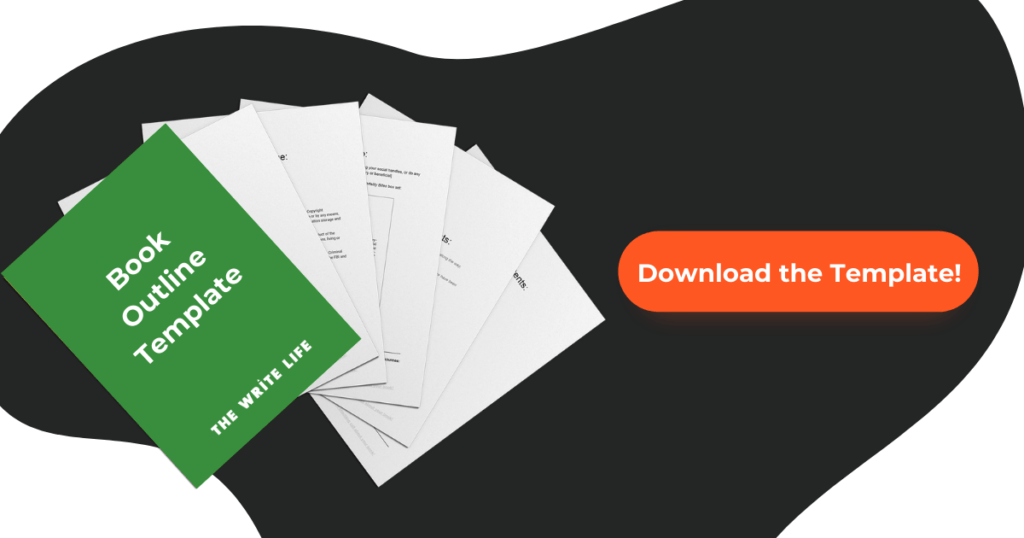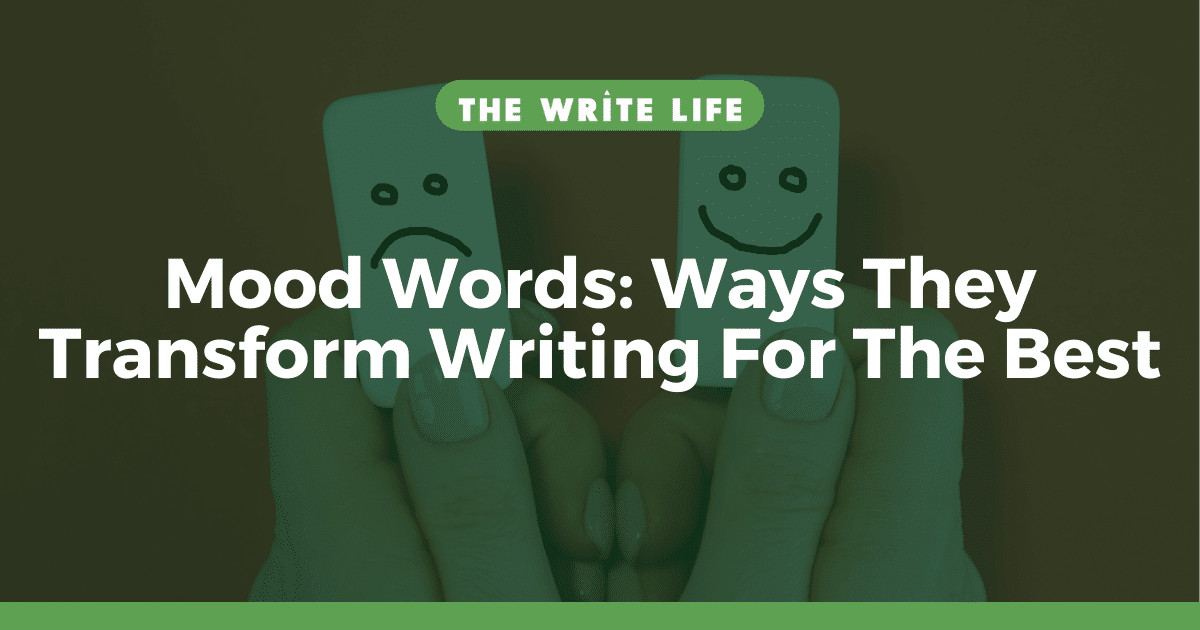Mood words are a controversial part of today’s writing. Used well, they can take your prose to an entirely new level. Used poorly, they can put your writing in a time warp and negate your creative credibility. Sound confusing? That’s why, in this article, we break mood words down.
What exactly are they? Why do they matter? How can you use them as a positive force to better communicate to your readers? It’s crucial to first start with a definition so we are all on the same page.
Table of Contents
Mood Words: What Are They And Why Do They Matter?
Mood words are words that describe the inner feeling of a character or the outer tone of a scene. For a more textbook answer, these type of words are simply called adjectives. If you pick up a classic work of literature, you will likely see long sentences complete with many adjectives.
For today’s writers, adjectives are a bit more out of style and strong nouns and verbs are stressed in importance. So how do you tread this line? Let’s dive in.
What They Are:
You can use mood words to describe a variety of topics: the weather, a character’s feeling, the tone you want to communicate in a particular scene, etc. Below is a short list of examples.
- Angry
- Bitter
- Confused
- Dedicated
- Energetic
- Flirty
- Gregarious
- Healthy
- Ingenious
- Jaded
- Kind
- Loving
- Mean
- Nervous
- Opinionated
- Polite
- Quiet
- Resourceful
- Silly
- Timely
- Unique
- Volatile
- Wise
Used in a sentence, these words can be interchanged to set an entirely different mood. For instance, look at the example below where I use mood words in two entirely different ways.
- The couple seemed flirty, even though they had just had an energetic fight.
- The wind came in short, flirty gusts, playing with her hair.
With these examples in mind, let’s discuss a bit more why they matter.
Why They Matter
Mood words can quickly set the tone in your writing, but you should use them sparingly. Gone are the days of sitting in a library for hours, reading a novel while waiting for tea.
Today’s writing is all about grabbing readers’ attention and keeping their attention with short, punchy sentences.
While in previous centuries mood words were combined to detail the feelings of characters, today they’re used to quickly set the tone. Writers don’t have any spare moments when it comes to keeping the reader’s attention.
At any moment, their reader could get a text, a phone call, or be jerked out of the fictional world with a social media notification. So how do you use mood words in today’s writing?
How Mood Words Level Up Your Writing
Because mood words are such a powerful way to communicate, let’s discuss six ways you can use them to take your writing to an entirely new level.
#1 – Quickly Set The Tone
With literally seconds to capture your readers, plunging them into the tone of the story is critical for your success. Look at how J.K. Rowling uses mood words to set the tone in her fifth Harry Potter book:
“October extinguished itself in a rush of howling winds and driving rain and November arrived, cold as frozen iron.”
She uses rush to personify October, dragging you into the chill of the tone in just a few words. Instead of dragging on the scene and describing every detail, the word rush quickly sets the tone and allows her to move on.
#2 – Speed Up The Scene
If you want to slow a scene down, similar to how videographers use slow motion, you can elongate your sentences: add words, describe details, and so forth. In the same way, if you want to speed up your scene, use short, punchy mood words and sentences. Consider the following:
Nervous, she dropped her notebook. Energetic wind blew her papers.
“Can I help?” The voice was quiet.
She looked around. No one. Confused, she stood frozen.
While this example uses many mood words such as energetic and frozen to get the point across, quickly. Look at your own writing to see how you can use a word or two to speed up your scene.
#3 – Leave Room For The Reader’s Imagination
Mood words act as succinct descriptors. A room can be chaotic, a person can be bitter, and an ocean can be volatile. Look at the following two examples:
#1: The waves crashed over the bow of the boat, sending spray over the occupants. They needed to reach land, but the waves continued to pound at the small fishing boat.
#2: The occupants clung to the fishing boat, stranded in the midst of the volatile sea.
While it’s up to you, the writer, to choose how much description to use, never forget to leave room for what is often described as “the theater of the reader’s mind.” If you need to communicate a mood quickly and continue with the story, try using mood words to do so.
#4 – Define Characters
Mood words are a greatly underestimated writing strategy to describe characters in just a word or two. For instance, think of how you could describe someone who is easily angered, has good moments and bad, and is larger than life: He was volatile, always waiting to erupt.
What about a timid, soft spoken child who likes to blend into his surroundings? Try the following: He stood against the wall, anything but gregarious.
And for one more example, what about a grandmotherly figure who has decades of wisdom and the personality to share it? What about this: She had a healthy wisdom that came out in quiet moments.
Mood words are a powerful way to describe a person, place, or even an idea, without going into long sentences of description.
Establish The Humanity In Your Writing With Mood
Oftentimes, the best writing is the most relatable. What is more relatable than humanity itself? After all, regardless of our social status, jobs, who we know, or the goals we strive for, we are all human.
When you decide to use mood words you open yourself up to taking an even deeper look at the humanity of your characters and the sensory details of your scene. Combine mood words with personification and you take your writing to an entirely new level:
- The paint chipped away from the door, jaded by how many people had walked out.
- The wind chapped her hands, as if bitter she refused to wear gloves.
- Flowers pushed through the earth, showing a quiet disregard for the snow still on the ground.
Now that you see how powerfully mood words can influence writing, spend the next few weeks noting where writers do so. What fiction or nonfiction books use mood words in the first chapter? Page? Paragraph?
Which authors use these types of descriptors to quickly portray the personality of their characters?
If you take notes in your books, make a practice of circling in pencil every time you spot mood words (you can always erase it later).
And if you’re feeling really brave, try creating your own examples and leave one or two in the comments to inspire others. We’d love to see what you come up with!








